Health Benefits Of Red Cabbage, Nutrition, And Side Effects
Add this delicious and vibrant vegetable to your diet for a stronger and healthier you.
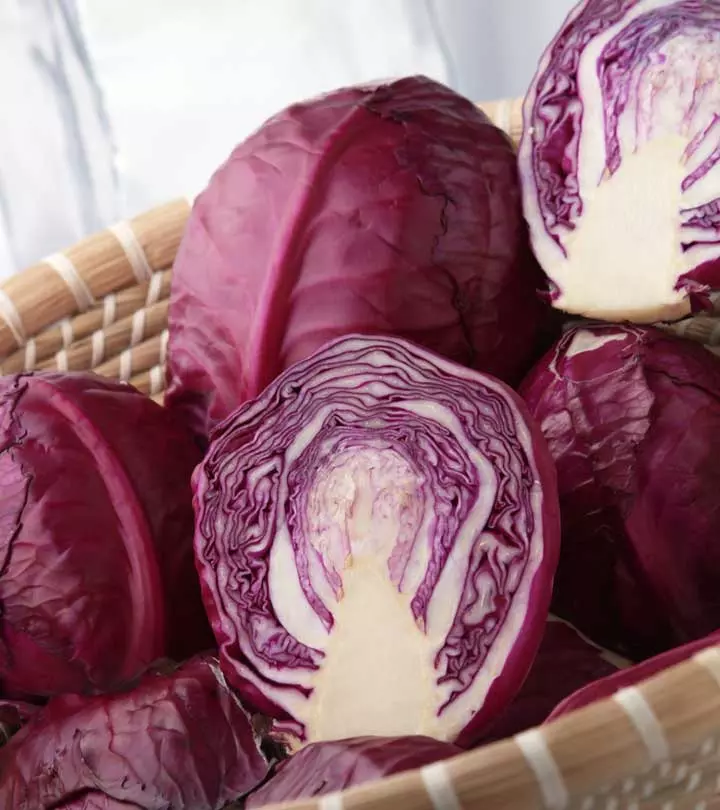
Image: Shutterstock
Cabbages have long been a part of a healthy diet, given their benefits. Among the different varieties, red cabbages (also called purple cabbages) are considered superior in terms of nutrients. These have a reddish-purple hue due to the presence of a flavonoid and antioxidant called anthocyanin. Red cabbage’s nutrition profile is impressive, as it is also a rich source of dietary fiber, and vitamins C and K. Consuming this vegetable may help reduce the risk of chronic diseases and improve the immune and digestive systems. In this article, we further explore how red cabbage benefits you, its nutrient profile, and potential side effects. Read on.

 Know Your Ingredient: Red Cabbage
Know Your Ingredient: Red CabbageWhat Is It?
A type of nutrient-dense cabbage with reddish-purple leaves, also called Blaukraut.
What Are Its Benefits?
Aids in weight loss, may help cancer treatment, boosts cardiovascular and digestive health, and Improves immune systems function.
Who Can Consume It?
People with fatty liver or those trying to lose weight.
How Often?
You can eat ½ a cup of raw cabbage or ½ to 3/4th a cup of cooked cabbage.
Caution
Excessive consumption can cause malabsorption, diarrhea, affect hypothyroidism, and flatulence.
In This Article
What Is Red Cabbage?
Red cabbage belongs to the brassica family and tastes the same as the green variant. It has gained special interest because of its unique color and is preferred by many as a garnish. Besides, it can be eaten raw or cooked, and can also be used as a fermented food. Red cabbage is rich in vitamins A, B6, C, and K, and helps strengthen bones and reduce inflammation.
 Trivia
TriviaThe vibrant red cabbage provides a significant amount of essential nutrients. Let us know what they are from the next section.
Key Takeaways
- Red cabbage has glucosinolates that help reduce the risk of bladder, breast, colon, and prostate cancers.
- It also helps improve digestive health, boosts the immune system, and reduces the risk of inflammatory diseases.
- However, if consumed in excess, you may experience issues like flatulence, diarrhea, or carbohydrate malabsorption.
Red Cabbage Nutrients

100g of red cabbage contain (1):
| Energy | 31 kcal |
| Water | 90.4g |
| Protein | 1.43g |
| Fiber | 2.1g |
| Carbohydrates | 7.37g |
| Vitamin C | 57 mg |
| Calcium | 45 mg |
, a nutritionist, says, “Cabbage and other cruciferous vegetables contribute to your “good” gut bacteria, which can help boost immunity and fight diseases. Additionally, red cabbage is a good source of antioxidants called anthocyanins, which have been shown to protect against many conditions.” In the following section, we understand these health benefits of red cabbage in detail. Keep reading.
Learn about the many red cabbage benefits in detail in the next section. Keep reading.
Health Benefits Of Red Cabbage
1. May Reduce The Risk Of Cancer
“Red cabbage is a cruciferous vegetable that has been shown to help protect against cancer,” says Hanks.
Studies suggest that anthocyanins provide 36 varieties of anti-cancer chemicals. They are said to have many protective and therapeutic roles in human health due to their antioxidant and anti-inflammatory properties. Besides, red cabbages contain glucosinolates (a natural compound), which are broken down into isothiocyanate compounds. These compounds have anti-cancer effects and may reduce the risk of bladder, breast, colon, and prostate cancers (2).
Studies suggest that young shoots of red cabbage have higher antioxidant activity and are richer in vitamin C, polyphenolic compounds, and carotenoids. The juice of these young shoots was found to be more effective in cancer prevention than that of the mature vegetable (3).
Red cabbage extract is also linked with a high death rate of cancerous cells. However, the extract was also said to have a cytotoxic (causing damage to living cells) effect and must be used at concentrations lower than 6.4 mg/ml (4).
2. May Aid In Weight Loss
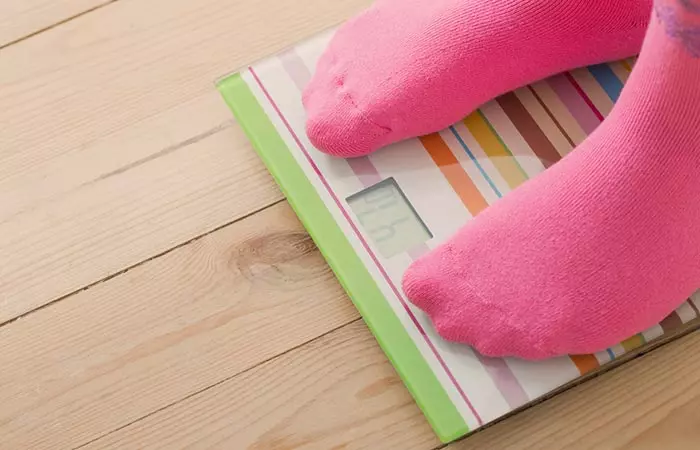
Red cabbage is a rich source of dietary fiber and has fewer calories. Fiber intake helps increase satiety and reduces energy intake. This way, it may promote weight loss and dietary adherence in adults who are overweight or obese (when coupled with a calorie-restricted diet) (5).
Whole red cabbage was also found to reduce LDL cholesterol and triglycerides in hypercholesterolemici A disorder that raises cholesterol levels in the blood and restricts its flow, which increases the risk of cardiovascular problems. rabbits better than its extract. This is due to the presence of vitamin C, polyphenols (anthocyanins, other flavonoids, and isothiocyanates), and manganese in red cabbages (6). Moreover, an encapsulated red cabbage extract was found to increase butyric acid production in the colon. Studies suggest that this short-chain fatty acid may help alleviate obesity and prevent associated diseases in adults (7),(8).
3. May Help Boost The Immune System
Red cabbage is a good source of vitamins K and C.
Vitamin C supports various cellular functions of both innate and adaptive immune systems. It also supports the epithelial barrier function against pathogens and promotes free radical scavenging activity of the skin. This, in turn, helps protect the body against environmental oxidative stress. Vitamin C deficiency often leads to impaired immunity and higher susceptibility to infections. Hence, dietary intake or supplementation of vitamin C may help prevent and treat respiratory and systemic infections (9). Besides, fermentable dietary fibers may regulate various properties of the immune system, including those of the gut-associated lymphoid tissues (10).
 Trivia
Trivia4. May Improve Digestive Health

Red cabbage is rich in sulfur and other minerals. These nutrients cleanse the digestive system, especially the bowels, and help prevent indigestion and constipation. Besides, raw cabbage juice has traditionally been used to repair the stomach lining and heal ulcers (2).
Vitamin C increases the absorption of non-hemeiron (mainly found in plant foods). It prevents the formation of insoluble and unabsorbable iron in the small intestine, and allows for its efficient transport across the intestinal epithelium. Vitamin C also reduces ferric to ferrous iron, which may be essential for iron uptake by the mucosal cells. Moreover, vitamin C-rich foods or supplements, when consumed with iron, may also increase hemoglobin production in anemic patients (11),(12).
Vitamin C also has antimicrobial effects against harmful bacteria, viruses, and fungi. Therefore, it may be able to regulate intestinal microbial communities. Vitamins C and D also help boost gut immune response and barrier function. Such changes can further regulate the gut microbiome (13). All these factors contribute to improved digestion and digestive health.
5. May Improve Heart Health
Anthocyanins exhibit antioxidant, anti-inflammatory, antimicrobial, and anti-carcinogenici A chemical that prevents or delays cancer growth by nullifying the effects of cancer-causing agents. activities. They also show beneficial effects on blood vessels, platelets, and lipoproteins, which reduce coronary heart disease risk (14).
Red cabbage contains vitamin B6, whose intake is linked with a reduced cardiovascular disease (CVD) risk. It inhibits lipoperoxide production and decreases homocysteine (an amino acid) levels and inflammation, which are CVD risk factors. Increased homocysteine levels in the blood may damage arterial walls (15).
Low vitamin C levels are linked with conditions like high blood pressure, endothelial dysfunctioni A condition wherein a shortage of nitric oxide gas narrows the arteries and restricts blood flow to the heart. , heart disease, atherosclerosis (plaque buildup in arteries), and stroke (16). As stated, red cabbage has a significant amount of Vitamin C, and its regular intake may benefit your cardiovascular health.
6. May Help Fight Inflammation
Consuming cabbages helps fight inflammation (17). Studies suggest that the anthocyanin-rich red Chinese cabbage may help reduce aortic inflammation and reduce the risk of vascular inflammatory diseases (18). According to another study, a mixture of commercial red Chinese cabbage leaves and Aronia fruits exhibits anti-inflammatory properties, and may be used to treat inflammatory diseases (19).
This way, red cabbage is way more beneficial than other varieties. However, this nutrient-dense food has some downsides too. Let us find out what they are.
Side Effects Of Red Cabbage
1) May Cause Flatulence

Cabbage is a flatogenic (the ability to increase intestinal gases) food. You may feel abdominal fullness, bloating, and movement of gas in the abdomen after consuming cabbage (20). Hence, eating it in moderation is advised.
2) May Cause Diarrhea
Repeated intake of fermented red cabbage (sauerkraut) may cause diarrhea. Some individuals may also experience intolerance reactions (21).
3) May Cause Carbohydrate Malabsorption
A cup of chopped red cabbage contains carbohydrates like fructose (1.9 g), which may cause malabsorption. The symptoms of carbohydrate malabsorption include flatulence, abdominal cramps and pain, diarrhea, and headache. These usually occur after eating a product containing incompletely absorbed sugar (22). Hence, avoid eating red cabbage with other high carbohydrate foods. These negative effects seem to occur only in people with cabbage allergies or if eaten in excess.
4) May Affect Thyroid Function
Vegetables that belong to the Brassicaceae family, like red cabbage, contain goitrogens. They are compounds that can interfere with iodine uptake, affecting thyroid function (23). Therefore, people with thyroid should avoid consuming red cabbage or have it in moderation, depending on their physician’s recommendation.
You can enjoy this nutrient-rich vegetable unless you are allergic to cabbage or its smell. But how can you prepare and eat red cabbage? Keep scrolling to know.
How To Prepare And Eat Red Cabbage

Red cabbage can be consumed as:
- Sauerkraut
- Pickle
- Juice
- Salad
- Boiled veggies
Here is a simple recipe with red cabbage:
Sautéed Red Cabbage
- Heat a pan over medium-high heat. Add oil and onion and sauté for 3 minutes.
- Add cabbage pieces and sauté it (with the pan covered) until it wilts for 3 to 5 minutes.
- Add vinegar and gently stir the cabbage.
- Sprinkle sugar and stir again.
- Season with mustard seeds, salt, and pepper, and reduce the heat.
- Allow the cabbage to cook for 10 minutes (stirring constantly).
- Garnish with chopped parsley and sprinkle some lemon juice.
Apart from sauteing red cabbage, you can also steam red cabbage for a simple, nutrient-rich side dish. It is a healthy option since this method requires no oil. You may also bake red cabbage by brushing it with olive oil. Alternatively, you can also consume it raw in salads, wraps, tacos, or bowls for extra crunch.
In the next sections, explore the other common types of cabbage and learn which variety is the best for you.
Types Of Cabbage
- Green Cabbage: This is the most common type of cabbage with crisp, pale green leaves. It is versatile and often used in soups, salads, coleslaw, and stir-fries.
- Red Cabbage: It has deep purple leaves and a slightly peppery taste. It is perfect for salads, pickling, and slaw.
- Savoy Cabbage: It is recognized by its crinkled, dark green leaves. It is tender and often used in stuffed cabbage rolls and soups.
- Napa Cabbage: Also called Chinese cabbage, it has a mild and sweet flavor which is ideal for preparing kimchi, stir-fries, and salads.
Christina, a blogger shares the success of her red cabbage cultivation and also describes a vibrant recipe for slow-cooked red cabbage. She says, “The red cabbage recipe is a classic and the recipe I follow is from the ‘Cordon Bleu’ series of, I don’t like to think how, many years ago – but a really good recipe is always a good recipe (i).”
Red Cabbage Vs. Green Cabbage
, a Registered Dietitian Nutritionist, says, “In comparison to green cabbage, red cabbage contains 10 times more vitamins, cancer-fighting flavonoids, and a winning number of antioxidants that improve eye, teeth, bone, and immune health.” However, they taste the same except that green cabbage turns sweeter when cooked.
Infographic: Benefits Of Red Cabbage
Red cabbage or purple cabbage is gaining popularity not only because of its unique color but also because of its health benefits. This unique cabbage variety promotes overall health if included as a part of the diet.
The following infographic lists the various benefits offered by red cabbage. Check it out!
Some thing wrong with infographic shortcode. please verify shortcode syntax
Red cabbage’s benefits are attributed to its rich nutritional properties. This cruciferous veggie has many beneficial properties, ranging from aiding weight loss to boosting cardiovascular health. Red cabbage is healthier than green cabbage as it has a higher antioxidant content. It may also be useful for promoting gut health and enhancing immunity due to its rich vitamin content. Red cabbages are a healthy superfood featured in pickles, juices, and salads. However, overconsumption may have unpleasant side effects. It can cause gastrointestinal issues such as flatulence or diarrhea. If you experience any adverse effects, limit its use and seek medical advice.
Frequently Asked Questions
Can red cabbage help with detoxification?
Yes, red cabbage may help with detoxification, as it is a cruciferous vegetable. These vegetables contain compounds called glucosinolates that break down into compounds that promote detoxification in the liver (24).
Is red cabbage good for your liver?
Yes, red cabbage is good for the liver. It contains indoles, compounds that may help reduce the risk of fatty liver.
Is red cabbage good for your hair?
Yes, red cabbage is good for your hair. Its vitamin A content helps boost hair health and hair growth.
Does red cabbage contain any anti-aging properties?
Possibly yes. A study conducted on roundworms showed that the antioxidants present in red cabbage increased their lifespan and reduced their stress levels (25).
What is the recommended serving size of red cabbage for maximum health benefits?
Generally, the daily consumption of about 1 cup of red cabbage may help you reap its health benefits. However, if you face certain medical disorders, it is important to talk to a healthcare professional and determine your recommended serving size.
Can red cabbage consumption help to improve brain function?
Possibly. Studies have shown that the consumption of cabbage is associated with better cognitive functions like memory (26).
Illustration: Health Benefits Of Red Cabbage, Nutrition, And Side Effects

Image: Stable Diffusion/StyleCraze Design Team
Discover the amazing health benefits of eating red cabbage. Watch this video to learn how this superfood can help improve your overall health and well-being.
Personal Experience: Source
StyleCraze's articles are interwoven with authentic personal narratives that provide depth and resonance to our content. Below are the sources of the personal accounts referenced in this article.
i. Red Cabbagehttps://myhesperidesgarden.wordpress.com/2012/11/18/red-cabbage/
References
Articles on StyleCraze are backed by verified information from peer-reviewed and academic research papers, reputed organizations, research institutions, and medical associations to ensure accuracy and relevance. Read our editorial policy to learn more.
- Cabbage red raw
https://fdc.nal.usda.gov/fdc-app.html#/food-details/169977/nutrients - Red cabbage millennium’s functional food
https://www.semanticscholar.org/paper/Red-cabbage%2C-millennium%27s-functional-food.-Dr%C4%83ghici-Lupu/a9bac787df6d444ef510d0cf069c421b44f378f4 - Comparative study of young shoots and the mature redheaded cabbage as antioxidant food resources with antiproliferative effect on prostate cancer cells
https://pubs.rsc.org/en/content/articlelanding/2025/ra/d0ra07861a - Anticancer and antioxidant effects of red cabbage on three cancerous cell lines and comparison with a normal cell line (HFF-3)
https://www.researchgate.net/publication/344521531_Anticancer_and_antioxidant_effects_of_red_cabbage_on_three_cancerous_cell_lines_and_comparison_with_a_normal_cell_line_HFF-3 - Fiber Intake Predicts Weight Loss and Dietary Adherence in Adults Consuming Calorie-Restricted Diets: The POUNDS Lost (Preventing Overweight Using Novel Dietary Strategies) Study
https://pubmed.ncbi.nlm.nih.gov/31174214/ - Bioefficacy of red cabbage against hypercholesterolemic diet mediated oxidative stress
https://clinphytoscience.springeropen.com/articles/10.1186/s40816-019-0126-y - The Influence of Red Cabbage Extract Nanoencapsulated with Brassica Plasma Membrane Vesicles on the Gut Microbiome of Obese Volunteers
https://www.researchgate.net/publication/351487000_The_Influence_of_Red_Cabbage_Extract_Nanoencapsulated_with_Brassica_Plasma_Membrane_Vesicles_on_the_Gut_Microbiome_of_Obese_Volunteers - The Protective Role of Butyrate against Obesity and Obesity-Related Diseases
https://pubmed.ncbi.nlm.nih.gov/33525625/ - Vitamin C and Immune Function
https://pubmed.ncbi.nlm.nih.gov/29099763/ - The immune-enhancing effects of dietary fibers and prebiotics
https://pubmed.ncbi.nlm.nih.gov/12088522/ - Vitamin C1
https://www.ncbi.nlm.nih.gov/labs/pmc/articles/PMC3884093/ - The role of vitamin C in iron absorption
https://pubmed.ncbi.nlm.nih.gov/2507689/ - Vitamins the gut microbiome and gastrointestinal health in humans
https://www.sciencedirect.com/science/article/pii/S0271531721000580 - Anthocyanins and heart health
https://pubmed.ncbi.nlm.nih.gov/18209270/ - Dietary Vitamin B6 Intake Associated with a Decreased Risk of Cardiovascular Disease: A Prospective Cohort Study
https://www.ncbi.nlm.nih.gov/labs/pmc/articles/PMC6682858/ - Vitamin C and Cardiovascular Disease: An Update
https://www.ncbi.nlm.nih.gov/labs/pmc/articles/PMC7761826/ - Inflammation related responses of intestinal cells to plum and cabbage digesta with differential carotenoid and polyphenol profiles following simulated gastrointestinal digestion
https://pubmed.ncbi.nlm.nih.gov/26990368/ - Anthocyanin-Rich Extract from Red Chinese Cabbage Alleviates Vascular Inflammation in Endothelial Cells and Apo E -/- Mice
https://pubmed.ncbi.nlm.nih.gov/29534512/ - Anti-inflammatory effect from extracts of Red Chinese cabbage and Aronia in LPS-stimulated RAW 264.7 cells
https://onlinelibrary.wiley.com/doi/full/10.1002/fsn3.1472 - Prevention and Treatment of Flatulence From a Traditional Persian Medicine Perspective
https://www.ncbi.nlm.nih.gov/labs/pmc/articles/PMC4893422/ - Regular Consumption of Sauerkraut and Its Effect on Human Health: A Bibliometric Analysis
https://www.ncbi.nlm.nih.gov/labs/pmc/articles/PMC4268643/ - Carbohydrate malabsorption in patients with non-specific abdominal complaints
https://www.ncbi.nlm.nih.gov/labs/pmc/articles/PMC4171253/ - Do brassica vegetables affect thyroid function?—a comprehensive systematic review
https://pmc.ncbi.nlm.nih.gov/articles/PMC11012840/ - The synergistic upregulation of phase II detoxification enzymes by glucosinolate breakdown products in cruciferous vegetables
https://pubmed.ncbi.nlm.nih.gov/11446830/ - Red Cabbage Rather Than Green Cabbage Increases Stress Resistance and Extends the Lifespan of Caenorhabditis elegans
https://www.ncbi.nlm.nih.gov/pmc/articles/PMC8228718/ - Plant Foods Rich in Antioxidants and Human Cognition: A Systematic Review
https://www.ncbi.nlm.nih.gov/pmc/articles/PMC8147117/
Read full bio of Dr Archana Batra
Read full bio of Aparna Mallampalli
Read full bio of Ravi Teja Tadimalla
Read full bio of Payal Karnik








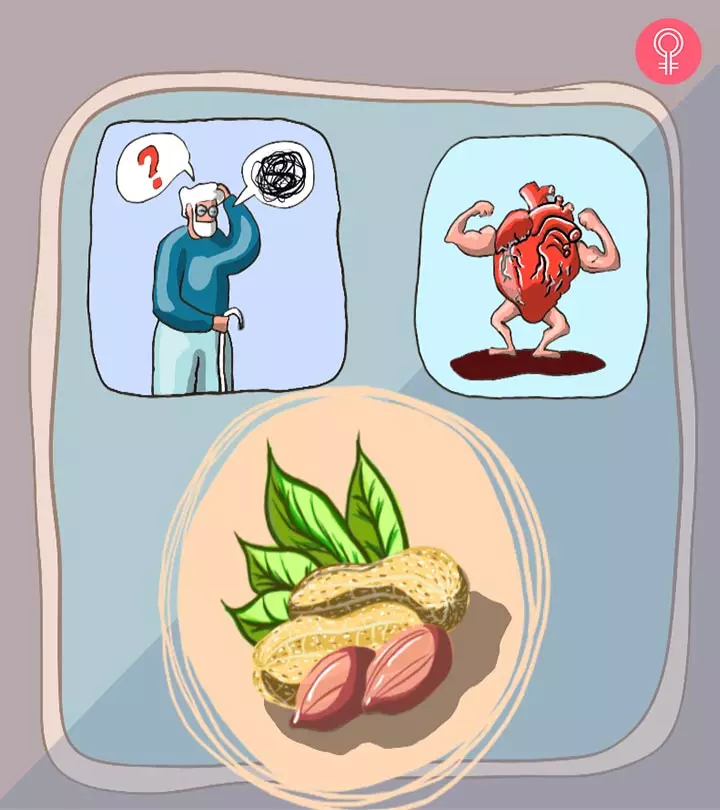


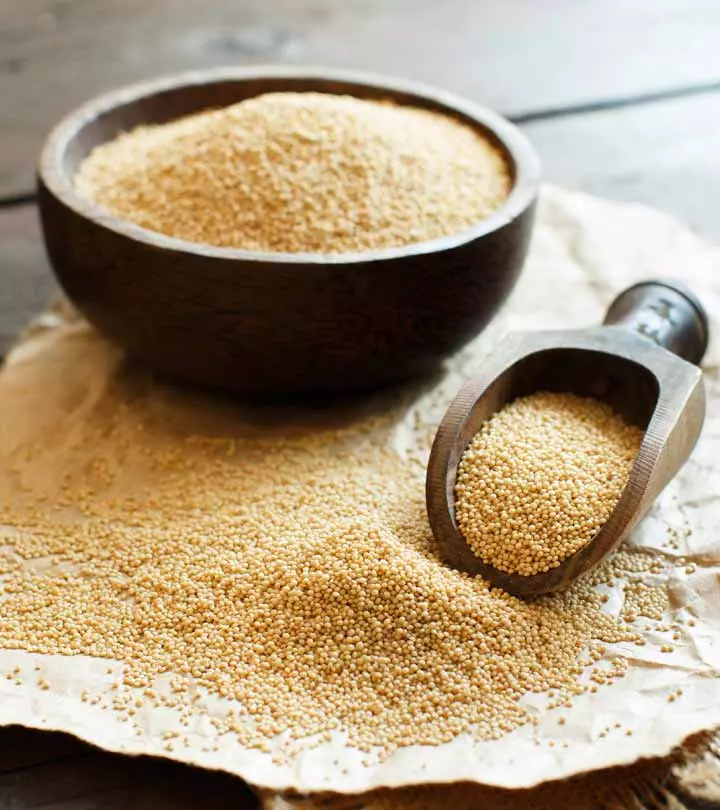
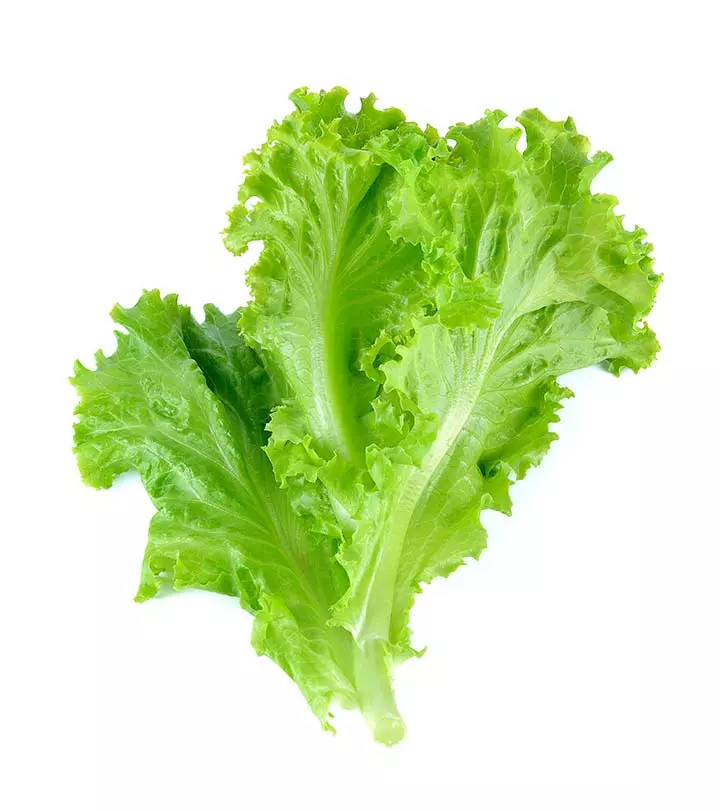


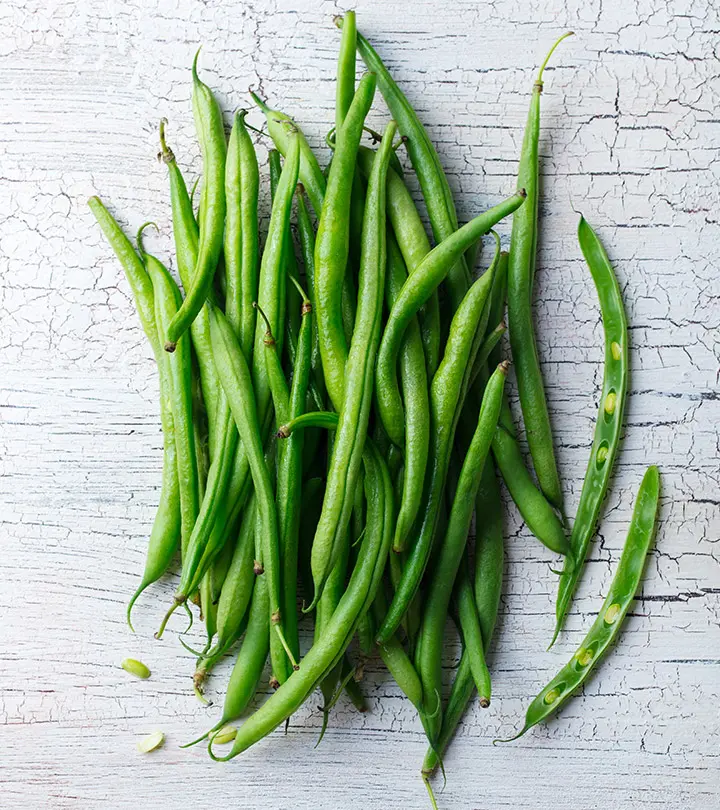
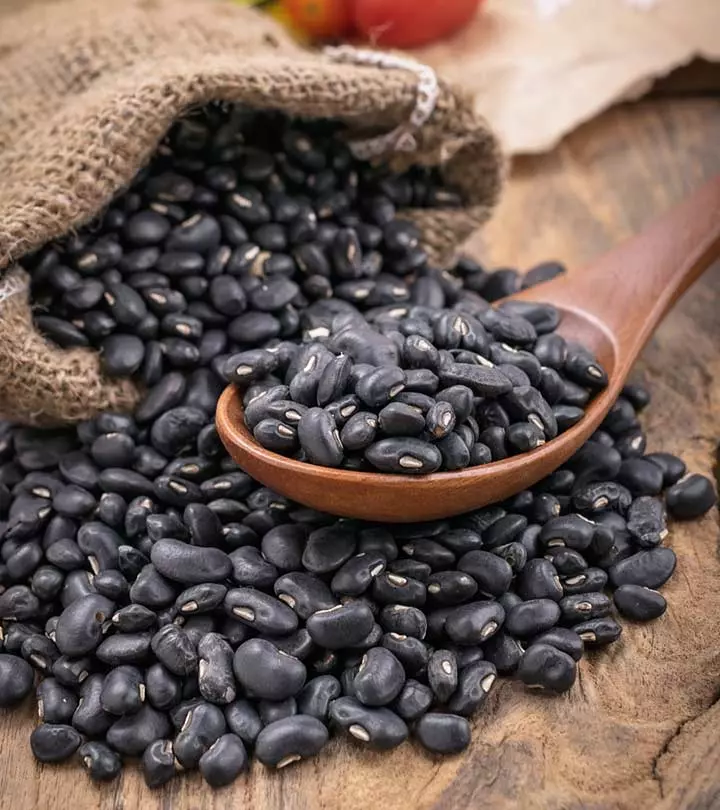



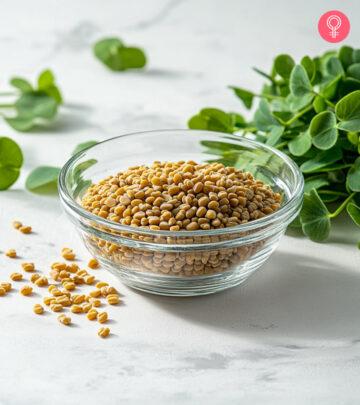
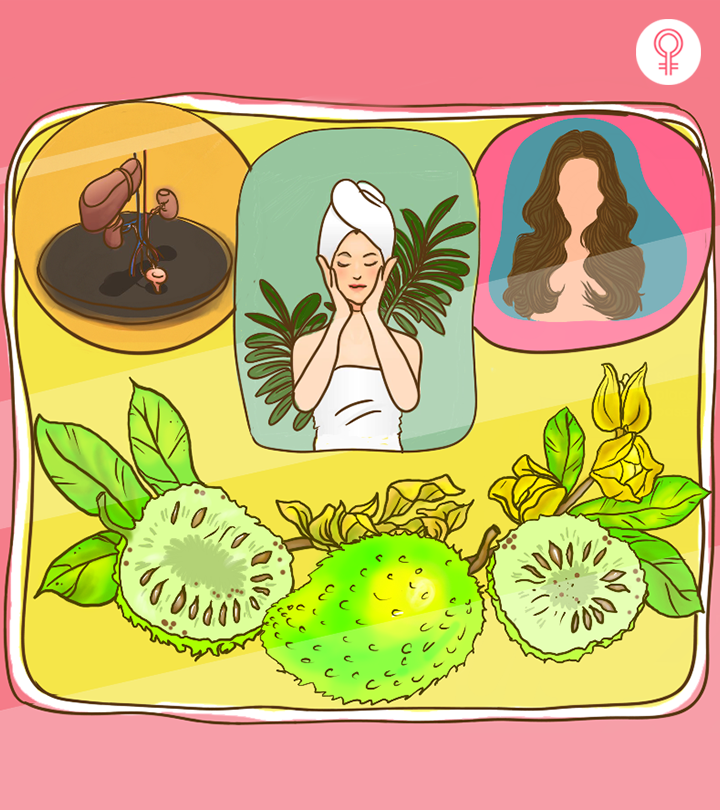
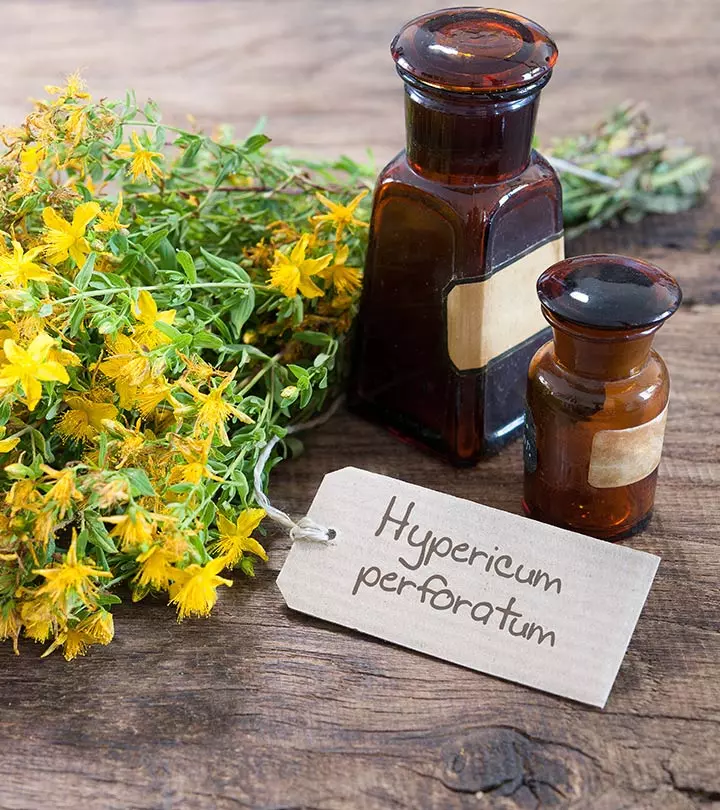

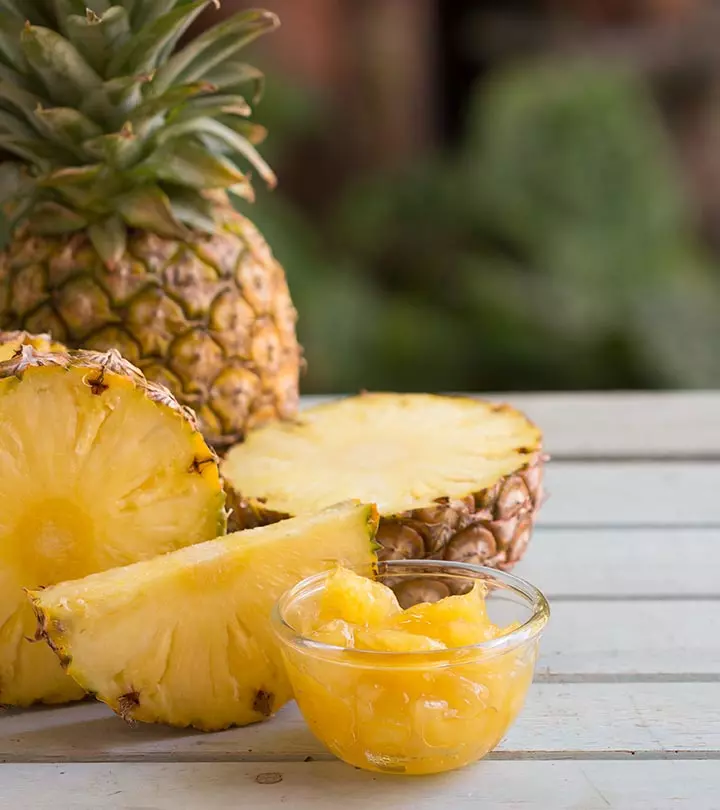
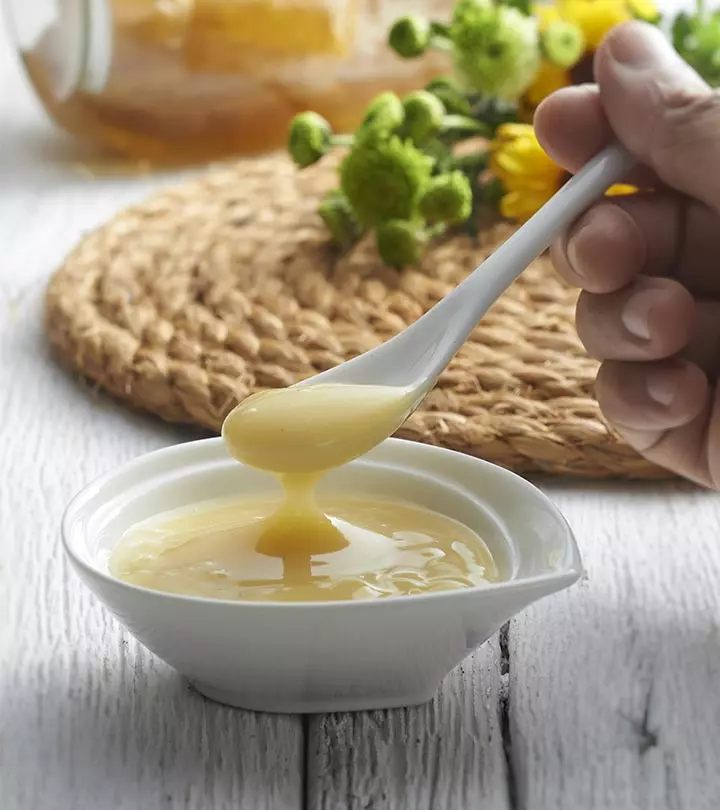

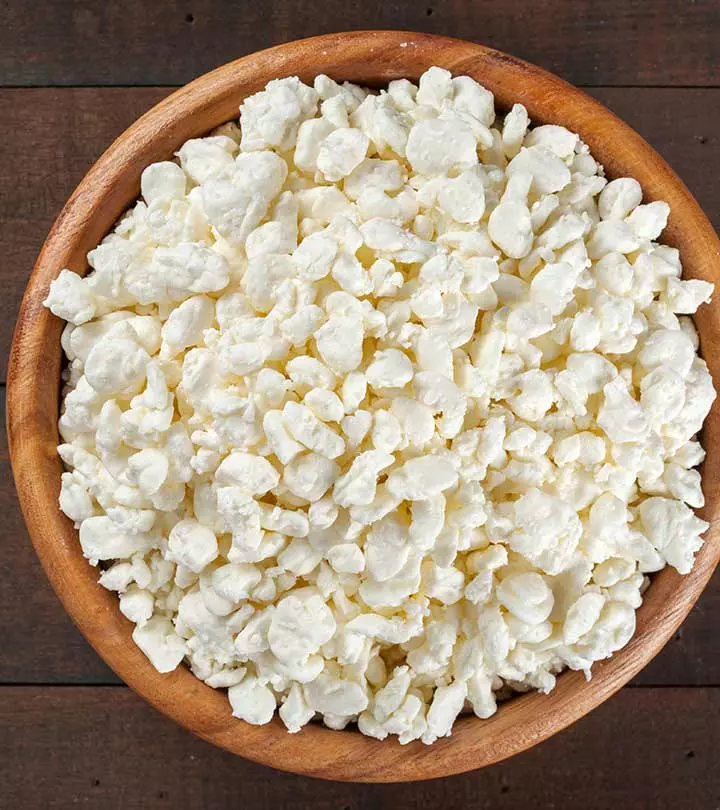
Community Experiences
Join the conversation and become a part of our empowering community! Share your stories, experiences, and insights to connect with other beauty, lifestyle, and health enthusiasts.